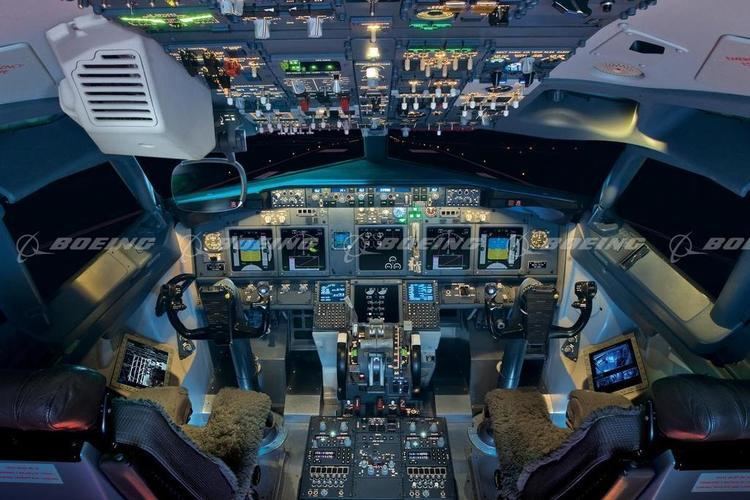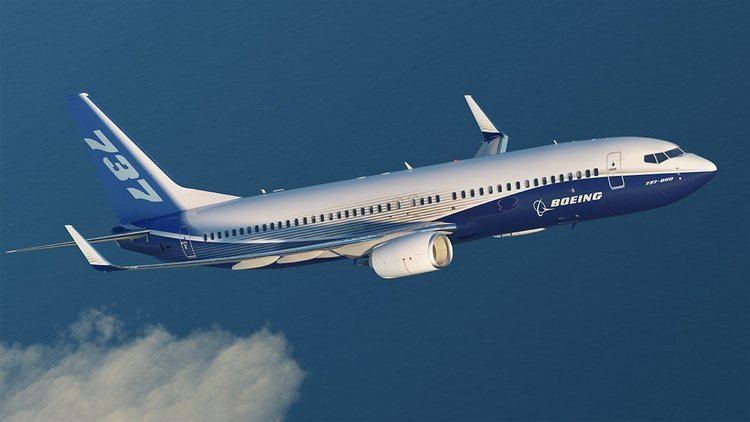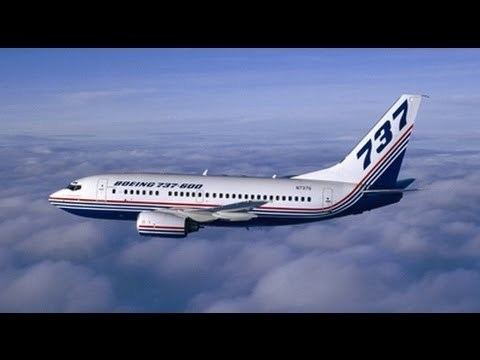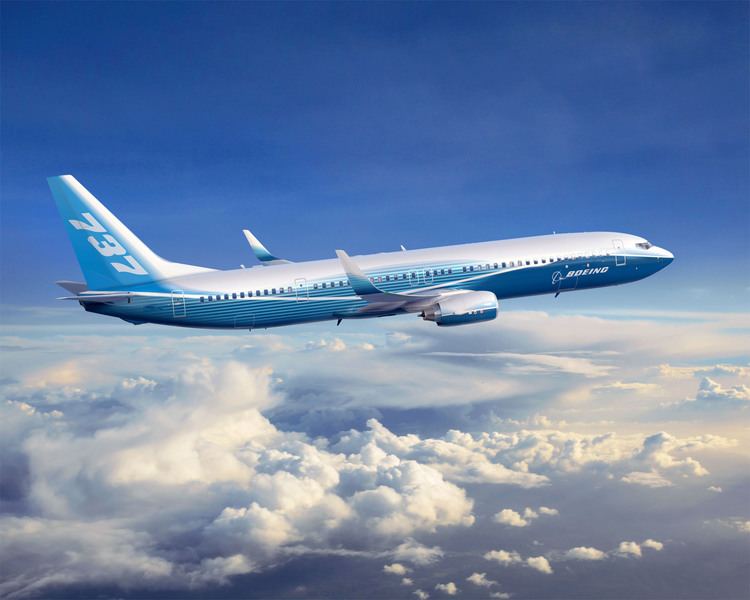Engine type CFM International CFM56 | First flight February 9, 1997 | |
 | ||
Unit cost 76,000,000–109,900,000 USD (2013) Manufacturer | ||
Boeing 737 next generation 737ng aircraft full documentary
The Boeing 737 Next Generation, commonly abbreviated as 737NG, is the name given to the −600/-700/-800/-900 series of the Boeing 737 airliner. It is the third generation derivative of the 737, and follows the 737 Classic (−300/-400/-500) series, which began production in the 1980s. They are short- to medium-range, narrow-body jet airliners. Produced since 1996 by Boeing Commercial Airplanes, the 737NG series includes four variants and can seat between 110 and 210 passengers.
Contents
- Boeing 737 next generation 737ng aircraft full documentary
- Background
- Interior
- Production and testing
- Further developments
- Replacement and re engining
- 737 600
- 737 700
- 737 700ER
- 737 800
- 737 900
- 737 900ER
- Military models
- Boeing Business Jet
- Operators
- Orders and deliveries
- Accidents and incidents
- References

As of December 2016, a total of 7,049 737NG aircraft have been ordered, of which 6,203 have been delivered. The remaining orders are in the -700, -800, and -900ER variants. The 737NG's primary competition is with the Airbus A320 family. Upgraded and re-engined models in development as the 737 MAX series are to eventually supplant the 737NG, with the first 737 MAX to be delivered in 2017.

Background

Prompted by the development of the Airbus A320, which incorporated ground-breaking technologies such as fly-by-wire, in 1991 Boeing initiated development of an updated series of aircraft. After working with potential customers, the 737 Next Generation (NG) program was announced on November 17, 1993. The 737NG encompasses the −600, −700, −800 and −900 variants, and is to date the most significant upgrade of the airframe. The performance of the 737NG is essentially that of a new airplane, but important commonality is retained from previous 737 generations. The wing was modified, increasing its area by 25% and span by 16 ft (4.88 m), which increased the total fuel capacity by 30%. New quieter and more fuel-efficient CFM56-7B engines were used. These improvements combine to increase the 737's range by 900 nmi, permitting transcontinental service. A flight test program was operated by 10 aircraft: 3 -600s, 4 -700s, and 3 -800s.
Interior

The passenger cabin of the 737 Next Generation improved on the previous style interior of the Boeing 757-200 and the Boeing 737 Classic by incorporating select features from the 777, with larger, more rounded overhead bins and curved ceiling panels. The interior of the 737 Next Generation also became the standard interior on the Boeing 757-300, and subsequently became optional on the 757-200.

In 2010, the interior of the 737 Next Generation was updated to look similar to that of the Boeing 787. Known as the Boeing Sky Interior, it introduces new pivoting overhead bins (a first for a Boeing narrowbody aircraft), new sidewalls, new passenger service units, and LED mood lighting. Boeing also offers BSI retrofits for older 737NG aircraft. Boeing's Space Bins carry 50% more than the pivoting bins, allowing a 737 to hold 174 carry-on bags.
Production and testing

The first NG to roll out was a −700, on December 8, 1996. This aircraft, the 2,843rd 737 built, first flew on February 9, 1997 with pilots Mike Hewett and Ken Higgins. The prototype −800 rolled out on June 30, 1997 and first flew on July 31, 1997, piloted by Jim McRoberts and again by Hewett. The smallest of the new variants, the −600 series, is identical in size to the −500, launching in December 1997 with an initial flight occurring January 22, 1998; it was granted FAA certification on August 18, 1998.
Boeing increased 737 production from 31.5 to 35 per month in January 2012, to 38 per month in 2013, to 42 per month in 2014, and is planned to reach rates of 47 per month in 2017 and 52 per month in 2018.
The monthly production rate could reach 57 per month in 2019, even to the factory limit of 63 later. A single airplane is produced in Boeing Renton Factory in 10 days, less than half what it was only a few years ago. The empty fuselage from Spirit AeroSystems in Wichita, Kansas, enters the plant on Day 1. Electrical wiring is installed on Day 2 and hydraulic machinery on Day 3. On Day 4 the fuselage is crane-lifted and rotated 90 degrees, wings are mated to the airplane in a six-hour process, along with landing gear, and the airplane is again rotated 90 degrees. The final assembly process begins on Day 6 with the installation of airline seats, galleys, lavatories, overhead bins, etc. Engines are attached on Day 8. It rolls out of the factory for test flights on Day 10.
Further developments
In 2004, Boeing offered a Short Field Performance package in response to the needs of Gol Transportes Aéreos, who frequently operate from restricted airports. The enhancements improve takeoff and landing performance. The optional package is available for the 737NG models and standard equipment for the 737-900ER.
In July 2008, Boeing offered Messier-Bugatti-Dowty's new carbon brakes for the Next-Gen 737s, which are intended to replace steel brakes and will reduce the weight of the brake package by 550–700 pounds (250–320 kg) depending on whether standard or high-capacity steel brakes were fitted. A weight reduction of 700 pounds (320 kg) on a Boeing 737-800 results in 0.5% reduction in fuel burn. Delta Air Lines received the first Next-Gen 737 model with this brake package, a 737-700, at the end of July 2008.
On August 21, 2006, Sky News alleged that Boeing's Next Generation 737s built from 1994 to 2002 contained defective parts. The report stated that various parts of the airframe produced by Ducommun were found to be defective by Boeing employees but that Boeing refused to take action. Boeing said that the allegations were "without merit". However, a one-year investigation by Al Jazeera's People & Power series in 2010 questions the safety of some structural parts in 737s.
As early 737NG aircraft become available on the market they are actively marketed to be converted to cargo planes via the Boeing Converted Freighter design as the operational economics are attractive due to the low operating costs and availability of certified pilots on a robust airframe.
Replacement and re-engining
Since 2006, Boeing has discussed replacing the 737 with a "clean sheet" design (internally named "Boeing Y1") that could follow the Boeing 787 Dreamliner. A decision on this replacement was postponed, and delayed into 2011.
On July 20, 2011, Boeing announced plans for a new 737 version to be powered by the CFM International LEAP-X engine, with American Airlines intending to order 100 of these aircraft. Internally, a minimum change version of the Leap-X is the probable final configuration for the proposed re-engined 737, and is expected to give a 10–12% improvement in fuel burn. Entry into service was planned for 2016 or 2017, with the new models probably being designated 737-7/-8/-9, being based on the 737-700/-800/-900ER respectively.
On August 30, 2011, Boeing confirmed the launch of the 737 new engine variant, called the 737 MAX. Its new CFM International LEAP-1B engines are expected to provide a 16% lower fuel burn than the current Airbus A320. The 737 MAX is to compete with the Airbus A320neo.
737-600
The 737-600 is the direct replacement of the 737-500 and competes with the Airbus A318. The Boeing 737-600 did not include winglets as an option. WestJet was to be the Boeing launch customer for the 737-600 winglets, but announced in their Q2 2006 results that they were not going to move ahead with those plans. The 737-600 was launched by Scandinavian Airlines (SAS) in 1995 with the first aircraft delivered on September 18, 1998. A total of 69 -600s have been produced and the final aircraft was delivered to WestJet in 2006.
Since 2012, Boeing has removed the 737-600 from their list of aircraft prices.
737-700
The 737-700 was the first of the Next Generation series when launch customer Southwest Airlines ordered the variant in November 1993. The variant was based on the 737-300 and entered service in 1998. It replaced the 737-300 in Boeing's lineup, and its direct competitor is the Airbus A319. It typically seats 137 passengers in a two-class cabin or 149 in all-economy configuration. The primary user of the 737-700 series is Southwest Airlines.
The 737-700C is a convertible version where the seats can be removed to carry cargo instead. There is a large door on the left side of the aircraft. The United States Navy was the launch customer for the 737-700C under the military designation C-40 Clipper.
737-700ER
Boeing launched the 737-700ER (ER for extended range) on January 31, 2006. All Nippon Airways is the launch customer, with the first one of five 737-700ERs delivered on February 16, 2007. The 737-700ER is a mainline passenger version of the BBJ1 and 737-700IGW. It combines the 737-700 fuselage with the wings and landing gear of a 737-800. It offers a range of 5,510 nautical miles (10,200 km), with seating for 126 passengers in a traditional two-class configuration. The 737-700ER competes with the Airbus A319LR. The 737-700ER has the second longest range for a 737 after the BBJ2. The 737-700ER is inspired by the Boeing Business Jet and is designed for long-range commercial applications.
All Nippon Airways began using the variant on daily service between Tokyo and Mumbai. ANA's service, believed to be the first all-business class route connecting to a developing country, from 2007 and use Boeing 737-700ERs until April 2016. As of November 2015, 1,118 -700, 119 -700 BBJ, 19 -700C, and 14 -700W aircraft have been delivered.
737-800
The 737-800 is a stretched version of the 737-700, and replaces the 737-400. It also filled the gap left by the decision to discontinue the McDonnell Douglas MD-80 and MD-90 following Boeing's merger with McDonnell Douglas. The −800 was launched by Hapag-Lloyd Flug (now TUIfly) in 1994 and entered service in 1998. The 737-800 seats 162 passengers in a two-class layout, or 189 in one class, and competes with the A320. For many airlines in the U.S., the 737-800 replaced aging Boeing 727-200 trijets.
The 737-800 is also among the models replacing the McDonnell Douglas MD-80 series aircraft in airline service; it burns 850 US gallons (3,200 L) of jet fuel per hour, or about 80 percent of the fuel used by an MD-80 on a comparable flight, even while carrying more passengers than the latter. According to the Airline Monitor, an industry publication, a 737-800 burns 4.88 US gallons (18.5 L) of fuel per seat per hour.
On August 14, 2008, American Airlines announced 26 orders for the 737-800 (20 are exercised options from previously signed contracts and six are new incremental orders) as well as accelerated deliveries. Ryanair, an Irish low-cost airline is among the largest operators of the Boeing 737-800, with a fleet of over 300 aircraft serving routes across Europe and North Africa. In November 2015, 4,120 -800, 67 -800A, and 21 -800 BBJ2 aircraft have been delivered with 936 unfilled orders.
In 2011, United Airlines operated the first U.S. commercial flight powered by a blend of algae-derived biofuel and traditional jet fuel flying a Boeing 737-800 from Houston to Chicago to reduce its carbon footprint.
In February 2016 Boeing launched a passenger to freighter conversion program designated the 737-800BCF (for Boeing Converted Freighter). Boeing started the program with orders for 55 conversions with the first converted aircraft due to be delivered in late 2017.
737-900
Boeing later introduced the 737-900, the longest variant to date. Because the −900 retains the same exit configuration of the −800, seating capacity is limited to 189 in a high-density 1-class layout, although the 2-class number is higher at approximately 177. Alaska Airlines launched the 737-900 in 1997 and accepted delivery on May 15, 2001. The 737-900 also retains the MTOW and fuel capacity of the −800, trading range for payload. These shortcomings until recently prevented the 737-900 from effectively competing with the Airbus A321.
737-900ER
The 737-900ER (ER for extended range), which was called the 737-900X prior to launch, is the newest addition and the largest variant of the Boeing 737 line and was introduced to meet the range and passenger capacity of the discontinued 757-200 and to directly compete with the Airbus A321. An additional pair of exit doors and a flat rear pressure bulkhead increased seating capacity to 180 passengers in a 2-class configuration or 220 passengers in a single-class layout though some airlines seal the additional exit. Additional fuel capacity and standard winglets improved range to that of other 737NG variants.
The first 737-900ER was rolled out of the Renton, Washington factory on August 8, 2006 for its launch customer, Lion Air. Lion Air received this aircraft on April 27, 2007 in a special dual paint scheme combining the Lion Air's logo on the vertical stabilizer and the Boeing's livery colors on the fuselage. Lion Air has orders for 132 Boeing 737-900ERs as of August 2015.
As of November 2015, 52 -900s, 918 -900ERs, and 7 -900 BBJ3s have been delivered with 152 unfilled orders.
Military models
Boeing Business Jet
In the late 1980s, Boeing marketed the Boeing 77–33 jet, a business jet version of the 737-300. The name was short-lived. After the introduction of the next generation series, Boeing introduced the Boeing Business Jet (BBJ) series. The BBJ1 was similar in dimensions to the 737-700 but had additional features, including stronger wings and landing gear from the 737-800, and has increased range (through the use of extra fuel tanks) over the other various 737 models. The first BBJ rolled out on August 11, 1998 and flew for the first time on September 4.
On October 11, 1999 Boeing launched the BBJ2. Based on the 737-800, it is 5.84 m (19 ft 2 in) longer than the BBJ1, with 25% more cabin space and twice the baggage space, but has slightly reduced range. It is also fitted with auxiliary belly fuel tanks and winglets. The first BBJ2 was delivered on February 28, 2001.
The BBJ3 aircraft is based on the 737-900ER aircraft. In January 2014, three 737-900ER aircraft had been configured as BBJ3 business jets for Saudi Arabian customers. The BBJ3 is approximately 16 feet longer than the 737-800/BBJ2, and has a slightly shorter range.
Operators
As of July 2016, 5,567 Boeing 737 Next Generation aircraft were in commercial service. This comprised 54 -600s, 1,039 -700s, 4,033 -800s and 441 -900s.
Orders and deliveries
Data through December 31, 2016
Accidents and incidents
According to the Aviation Safety Network, the Boeing 737 Next Generation series has been involved in 15 hull-loss accidents and 10 hijackings, for a total of 590 fatalities.
